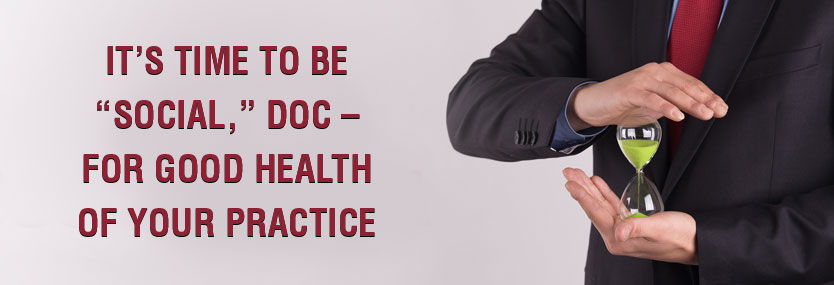The Affordable Care Act has changed the dynamics of operation of the entire healthcare industry. As the industry gears itself to evolve with it, social media is just one of the changes we can expect to see.
The Affordable Care Act has changed the dynamics of operation of the entire healthcare industry. As the industry gears itself to evolve with it, social media is just one of the changes we can expect to see.
The “social revolution” in healthcare came with the use of platforms like Facebook, LinkedIn, YouTube, blogs and Twitter. The freely available web-based platforms have transformed the way we all communicate as a society. Use of these social media tools to connect with people and to broadcast health messages has grown extensively and continues to trend upward. Through community-building, rapid dissemination of information, easy modes of message amplification and high power of engagement – social media has changed the traditional marketing approaches in the healthcare industry.
Per Centers for Disease Control and Prevention (CDC) social media tools, guidelines and best practices, social media and other emerging communication technologies can connect millions of voices to:
- Increase the timely dissemination and potential impact of health and safety information.
- Leverage audience networks to facilitate information sharing.
- Expand reach to include broader, more diverse audiences.
- Personalize and reinforce health messages that can be more easily tailored or targeted to particular audiences.
- Facilitate interactive communication, connection and public engagement.
- Empower people to make safer and healthier decisions.
As the number of people turning to the Internet to make their health decisions is increasing at an exponential pace, social media tools can be used by healthcare providers as an effective way to foster engagement and expand reach and provide easy access to credible, science-based health information. An important serviceable trait of using social media is that it helps to reach people when, where and how they want to receive health messages. As the information can be presented in multiple formats, it improves the availability of content and helps make messages more credible and effective. This may influence satisfaction and trust in the health messages delivered.
Every patient interaction you have on various platforms like patient-review websites, blogs posts, Facebook, Twitter and LinkedIn is an excellent opportunity to let the world know about service excellence at your practice. Through these interactions, you can get to know the mind-set of patients. You can utilize this medium to address the issues patients may have faced at your practice, apologize for any inconvenience caused and assure them that nothing less than the best healthcare services will be provided.
More and more hospitals, healthcare providers and health authorities have opened accounts on YouTube, Facebook and Twitter to reach and target their potential clients. According to a study published by the Journal of Medical Internet Research, nearly 95% of US hospitals are on Facebook and 50% have a Twitter account.
Social media has changed the dynamics of the physician-patient relationship. Maintaining a virtual relationship with patients on social media has become imperative for physicians and other healthcare providers. Each post you make on social media platforms can be a good chance to convert potential patients. If you have a reasonable following on social media, you can reap trifold benefits of simultaneously connecting with new patients, existing ones and other visitors who can be future potential patients.
The patient-physician relationship is nurtured when physicians provide reliable quality information, respond respectfully and in a timely manner, preserve confidentiality and facilitate access to care. Social media acts as a catalyst by helping physicians accomplish these goals through facilitation of information sharing and improving accessibility to their providers. These factors collaboratively enhance the patient experience and build a relationship of credibility and trust.
From the digital and technological trends in healthcare, it’s evident that the healthcare industry is in a phase of radical transformation. Social media, mobile apps, customized websites, blogs, groups and forums have brought a shift that can be well-described as a “tech-tonic” shift in healthcare marketing. Forward-thinking social media marketing approaches provide a tremendous opportunity for healthcare providers to increase their online visibility, create brand equity, develop a positive online reputation – the key essentials to outperform competition and sustain consistent growth in the new era of healthcare: Health 2.0.
